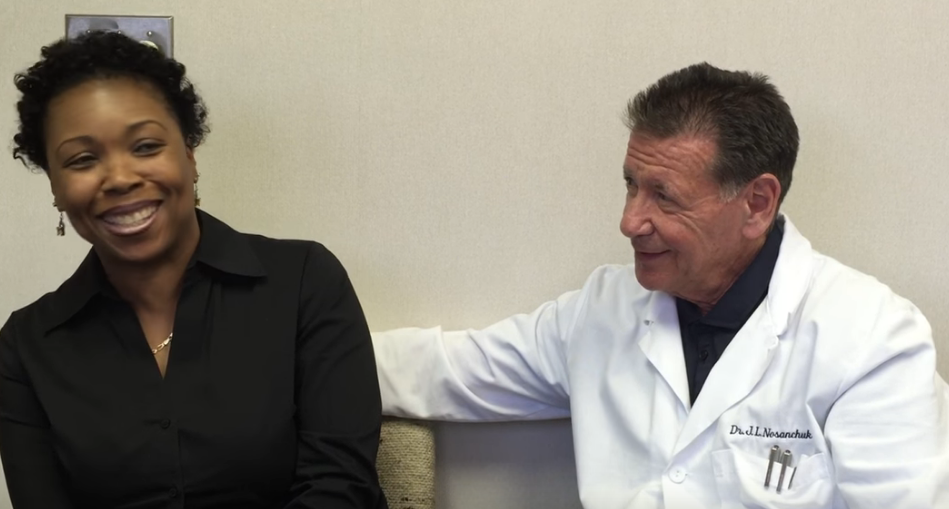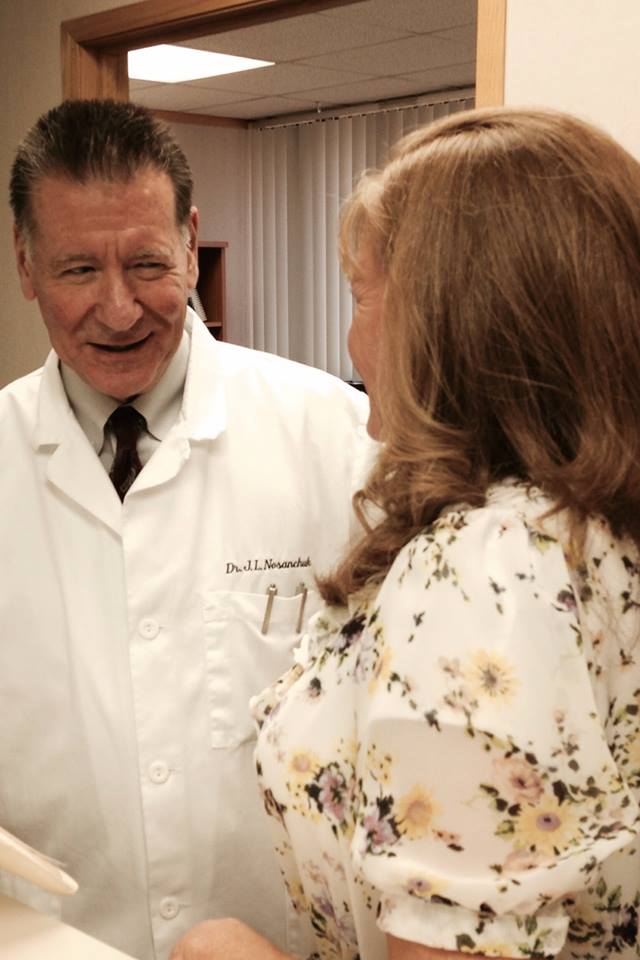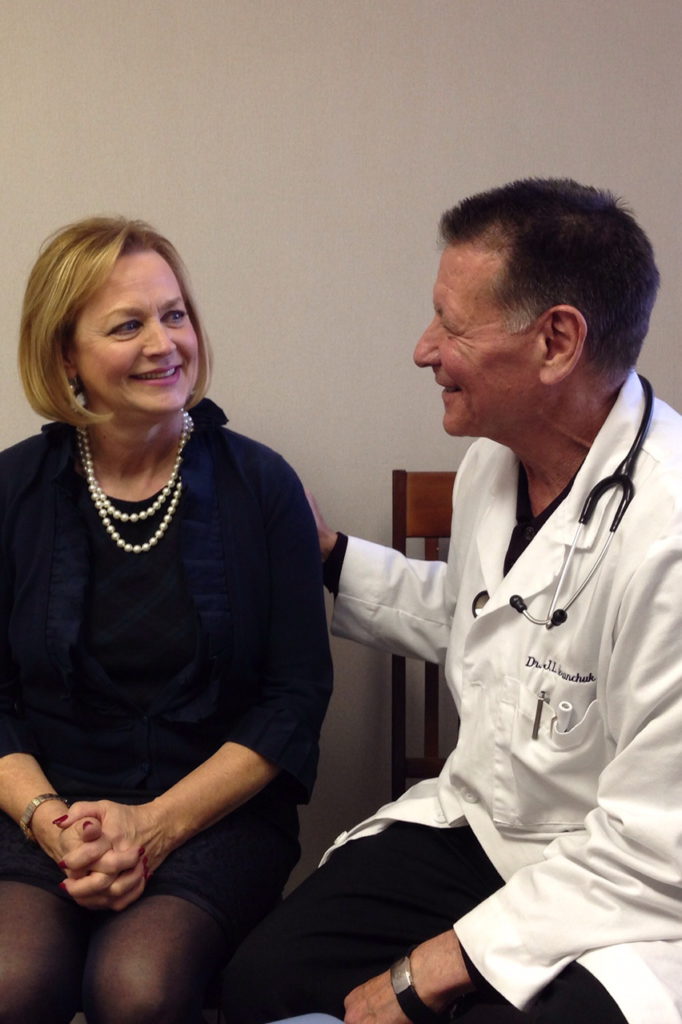Look younger, prevent skin aging, avoid hair loss and have a great sex life
When you reach menopause your skin ages rapidly, it looses collagen, thins, wrinkles and you look older. Fortunately this change in your appearance is preventable and reversible. This may sound too good to be true but I can assure you it is accurate. I can also assure you that optimal hormone therapy is more effective in rejuvenating the structure of your skin than any other therapy available.

Our goal is for every one of our menopausal patients to be able to say … I’m Back to being me.
Dr. N provides bio-identical treatment regimens that will resolve your hot flashes, sweats, sleep disturbances, headaches, fatigue, depression, give you back your sex life and keep you looking younger.
therapy.
Menopause – Symptoms, Sex and Hormones – YouTube
Is there a perfect method for everyone?
There is no perfect method of hormone replacement and none that precisely mimics nature. Fortunately this isn’t all bad. During a woman’s reproductive years, peaks and valleys of hormone concentration in the blood can influence your mood and sense of well being. But in many hormone therapy regimens there are no peaks and valleys to negatively influence your sense of well being.
In a woman’s reproductive years the peaks and valleys are necessary to trigger ovulation. If you count the first day of menstruation as day one this is the time your estrogen level begins to rise and will will reach its highest level around day 14 at which time ovulation occurs. For many women the days around the mid cycle estrogen peak is the time they feel best. It is also the time they are most interested in intimacy. It is natures way of increasing the possibility of conception. If the ovum or egg is not fertilized her estrogen level begins to fall until it reaches its lowest level the first day of the next menstruation and then the cycle repeats itself. For most women the rise in estrogen level has a positive effect on mood and sense of well being. A declining estrogen may have the opposite effect and is likely the mechanism responsible for PMS.
It is of note that some patients request that they be given the “lowest possible dose” of hormone replacement a reflection of a perception that somehow hormone replacement is unwise, dangerous, unnatural or all of the above. This is contradicted by the weight of medical research which suggests hormone replacement increases longevity and enhances quality of life and maintains a more youthful appearance. Hormone replacement should be given in a dose appropriate for each specific individual as everyone differs in their desires, needs and capacity to absorb and metabolize hormones. Ideally, this would be in an amount sufficient to fully accomplish its beneficial effect.
The hormones replaced in menopausal women include:
Estrogen
The ovarian hormone responsible for the development and maintenance of what we refer to as secondary sexual characteristics.
Progesterone
The ovarian hormone responsible for protecting the uterine lining from being overly stimulated by estrogen. Estrogen given alone (unopposed) when the uterus is present can result in the development of abnormal changes of the endometrium (uterine lining) including cancer. The addition of adequate amounts of progesterone to a program of hormone replacement as this prevents this from occurring. Progesterone is not usually given following a hysterectomy as there is no uterine lining present to protect. In those patients who still have a uterus progesterone is usually indicated.
no uterine lining present to protect. In those patients who still have a uterus progesterone is usually indicated.
Testosterone
The ovarian hormone responsible for sex drive, energy, muscle mass and assertiveness. Thought by many to be exclusively a male hormone it has important functions in women. Along with the other ovarian hormones it is markedly diminished when the ovaries have been removed. In menopausal women consideration should be always be given to including testosterone in their hormone replacement regimen.
Any of these sex hormones, estrogen, testosterone and progesterone can be administered alone or in combination.
In addition there are a number of routes of administration available to get these hormones into your system. Your choice may be influenced by:
•Type of menopause
•Concurrent medical conditions
•Age at menopause
•Response to previous therapy
•Current age
•Intolerance to previous hormone replacement program
•Symptoms
•Individual perception of hormone replacement program
•Hormones to be replaced
•Individual psychological makeup
Ultimately, the choice of which hormone or hormones and which route of administration should depend on what each individual is comfortable with in view of what she perceives to be her needs, goals and lifestyle.
Estrogen, progesterone and testosterone can all be given using any of the described methods. But, for the sake of clarity and simplicity and I will first discuss the routes of administration using estrogen alone. Progesterone, testosterone and combination therapy is discussed elsewhere.
Subcutaneous Implantation of bio-identical estrogen pellets and testosterone pellets. It is the most effective method and is used primarily by physicians who have a special interest or training in the treatment of menopausal women. It resolves menopausal symptoms and sexual dysfunction unresponsive to previously administered therapies. I have found it to be the therapy of choice when other methods of hormone replacement have failed as is too often the case following hysterectomy and ovarian removal. It is effective in restoring quality of life in patients with persistent and life-altering menopausal symptoms and sexual dysfunction. The pellets which consist of estradiol, are derived from Soy a naturally occurring substance. They are inserted into the subcutaneous tissue of the abdomen or buttock usually at 3-6 month intervals.

Transdermal Patch This is a method of delivering bio-identical estrogen into the bloodstream. There are a number of patches available today and they share some common elements. To my knowledge they all contain estradiol a bio-identical form of estrogen and a delivery system which allows the hormone to be gradually absorbed by the skin and an adhesive to keep it on. It is applied to the skin and replaced once or twice weekly. The estrogen is absorbed gradually over the length of time each individual patch is worn and this is more physiologic. It has the disadvantage of causing skin irritation in 10-30% of those who try it. Sometimes this is mild and can be alleviated simply by moving the patch to a different area of skin daily but can be severe enough to require its discontinuance. It is not as acceptable to some women who exercise strenuously or live in warmer climates as there is greater difficulty with adherence to the skin with increased perspiration. When skin irritation becomes a significant problem a switch can be made to a gel or an estrogen implant.
Transdermal Gel is a very useful method of delivering bio-identical estrogen replacement. A measured amount of gel is rubbed on the skin once daily. It is absorbed and in theory at least, the skin acting as a reservoir releases it gradually into the bloodstream. It is simple, well tolerated, relatively inexpensive, there is no “bolus” effect and it avoids the “first liver pass”.

Sublingual administration of estrogen can be used and in this method a tablet, usually “estradiol” the biologically active form of estrogen is placed under the tongue. It is absorbed through the lining of the mouth into the blood vessels located under the tongue and then into the bloodstream. It avoids the “first liver pass” but is delivered into the blood all at one time as opposed to the gradual “trickle” delivery of the patch.
Intramuscular Injection is a common method of estrogen replacement and is used by many physicians. The hormone is usually mixed with a “vehicle” to slow its release into the bloodstream and depending on the dose administered is usually given at 2-4 week intervals. It has the disadvantage of relatively high levels soon after administration which decline rapidly after a week or so.
Creams have been used as a method of hormone replacement for several years and is an interesting story. Vaginal dryness and loss of elasticity of the vagina can be painful and a distressing symptom of hormone deficiency. Estrogen cream is considered an effective treatment for this problem. One important point is the estrogen in vaginal creams may be absorbed into the bloodstream and stimulate other estrogen dependent tissues including the uterine lining. Another important point is that a woman should not use estrogen vaginal cream prior to intercourse as the estrogen in the product can be absorbed into her partners bloodstream through the skin of the penis..
Suppositories perform the same function as the cream delivery method. They are preferred by some users who find them less messy.
Oral Estrogen Therapy
Oral route of estrogen is the only route of estrogen therapy listed here that is not bio-identical. I rarely use this route of administration and only when the patient insists after a discussion of benefits and risks. There are safer and more effective methods. The oral route of administration is known to increase the potential of cardiovascular events, including heart attacks, strokes, blood clots and an elevation of blood pressure. Other potential problems with this route of administration include decreased libido and nausea. From my standpoint the only advantage is cost and for many individuals this is an important concern. At this moment none of my patients are on oral estrogen. Nonetheless, I believe the oral route of hormone replacement is the most frequently utilized method of hormone replacement in the world.
There are several oral estrogen products available and each manufacturer gives various reasons why their product is superior. The advantage of the oral route is that for most people it’s easy to take a pill and as mentioned above it is relatively inexpensive.
IMPORTANT: This website is for educational purposes only. It is not intended to suggest a specific therapy for any individual and must not be construed to establish a physician patient relationship.